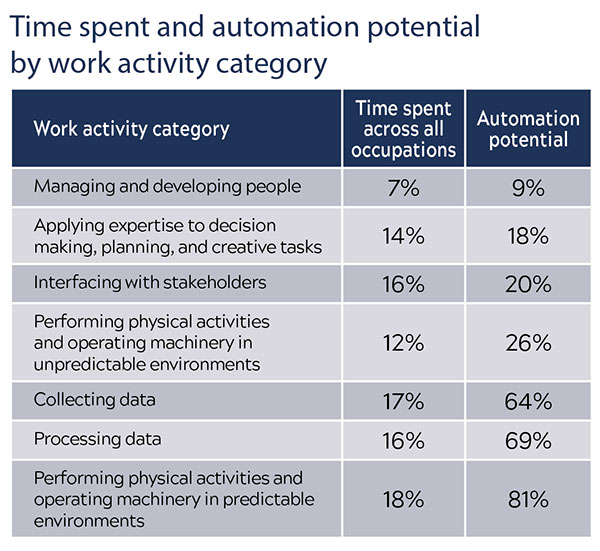Factor Humans Into Industry 4.0
Klaus M. Blache | July 20, 2022
From the first industrial revolution, manufacturing has been on a continuous path of inventing and implementing new technologies.
Today, mainstream focus is on Manufacturing/Industry 4.0 (digitization and connectivity of everything). How we make and transport product is quickly changing. Additive manufacturing (3D printing) is evolving and now includes 4D printing. From the production of medicine to mining minerals, technologies will never remain the same.
At the same time, human assistance is making jobs easier and safer. Examples include robot-assisted surgery, repetitive/heavy material handling, and working with hazardous materials. Expect to see more robots in other places such as home use, security, restaurants, and hotel services. Autonomous vehicles are here, and self-driving taxis, buses, and trucks are next. Technologies also make workers more productive with cobot assists, ergonomic gloves, and laser alignment.

Source: McKinsey Global Institute. As connected technology implementation grows, significant numbers of people will need to change occupational categories and acquire new skills.
As technologies and digital interconnectivity are introduced, it bumps up against human behavior in every part of the business. The response can be good or bad, depending on each individual’s role in the organization and how change affects their lives. Examples of potential reactions and employee questions (which they may or may not share) include:
• this new technology is not their expertise so their perceived value and self-esteem lowers
• fear that their job will be eliminated
• stress in learning a new system
• loss of job control/perceived power when machines make decisions.
People don’t resist change; they resist how it impacts their lives. Disruption due to job displacement is a transitional issue that many organizations need to address. History shows that technologies greatly improve productivity and financial growth for companies and individuals. Over time, they typically create many more new jobs than they displace. However, the scale of the immediate issue for affected workers requires much more be done to enable job/occupation transitions.
While technology can increase productivity and reduce costs, it’s human factors that will enable us to fully integrate people and technologies to achieve maximum potential. Human factors/ergonomics can play a key role in ensuring that companies apply automation that can effectively work and interact with people. This also includes worker “buy-in” to the new work procedures, roles, and responsibilities. Addressing this in the design stage and including operators and trades/technicians early on will greatly help in achieving more acceptance.
Ergonomics usually deals with the design of workplaces. Human factors use several disciplines (such as anatomy, physics, physiology, and biomechanics) to understand how people perform under different circumstances. By understanding the attributes that influence worker decision making, job changes and integrating technology will be more successful.
One of the major findings (see chart) is that between 75-million and 375-million people around the world may need to change occupational categories and acquire new skills by the year 2030. (How will automation affect jobs, skills, and wages? | McKinsey)
At the same time everything and most everyone is getting connected. “By 2030, the number of sensors and devices connected to the Internet of Things (IoT) is expected to increase from 21 billion in 2018 to about 125 billion worldwide by 2030 (businessweek.com). Successfully implementing technology is a sociotechnical endeavor. It requires focus on the technical aspects of the technology performance and the people side of the business. EP
Based in Knoxville, Klaus M. Blache is director of the Reliability & Maintainability Center at the Univ. of Tennessee, and a research professor in the College of Engineering. Contact him at kblache@utk.edu.









View Comments